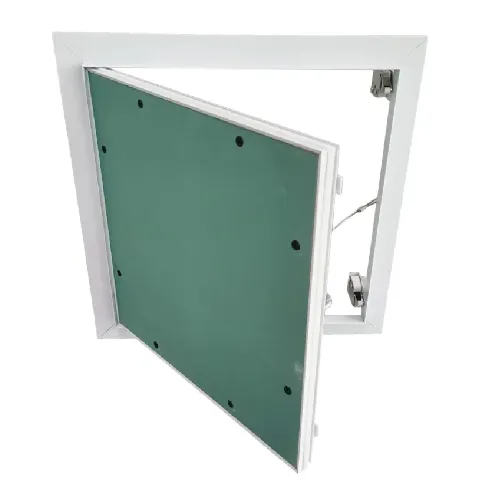Dec . 07, 2024 03:58 Back to list
Standard Sizes for Ceiling Access Panels Explained in Detail
Understanding Standard Ceiling Access Panel Sizes
Ceiling access panels are essential components in modern construction, providing critical access to various utilities that may be concealed behind ceilings. These panels facilitate maintenance, inspections, and repairs of electrical, plumbing, and HVAC systems without the need for extensive demolition. As such, understanding standard ceiling access panel sizes is crucial for contractors, builders, and homeowners alike.
The Importance of Access Panels
Access panels are designed to serve multiple purposes. They grant access to areas that require periodic maintenance while ensuring that the aesthetics of the surrounding ceiling remain intact. In commercial buildings, access panels are often found in offices, retail spaces, and industrial facilities, where they play a pivotal role in the upkeep of essential systems. In residential settings, they allow homeowners to conveniently access critical infrastructure, such as ductwork, wiring, and plumbing.
Standard Dimensions
When it comes to standard ceiling access panel sizes, several dimensions are common in the market. The most frequently used sizes are 12” x 12”, 14” x 14”, 16” x 16”, 24” x 24”, and 24” x 48”. These dimensions are typically chosen based on the needs of the installation, the type of systems that need access, and local building codes.
1. 12” x 12” Panels These smaller panels are perfect for accessing compact spaces or utilities that require limited access. They are commonly used in residential settings, especially in areas like soffits or lower ceilings.
2. 14” x 14” Panels A slightly larger option, these panels are useful when a bit more clearance is needed. They are still suitable for residential applications and are great for small areas where plumbing or electrical lines are present.
3. 16” x 16” Panels This size is increasingly popular and strikes a balance between accessibility and size. It is widely used in both residential and commercial applications, particularly when accessing ductwork or electrical systems that may require a bit more room.
4. 24” x 24” Panels These are quite common in commercial settings, where larger access points are needed, particularly for HVAC systems and larger electrical installations. They allow technicians enough room to navigate and conduct maintenance with ease.
standard ceiling access panel sizes

5. 24” x 48” Panels These oversized panels are primarily utilized in commercial applications and are ideal for accessing larger mechanical systems and configurations. Schools, hospitals, and large office buildings often require these for maintenance and inspection.
Custom Sizes
While standard sizes meet the needs of most applications, sometimes custom sizes are necessary to accommodate specific structural constraints or unique installation requirements. Manufacturers can often provide access panels in custom dimensions based on the project requirements, allowing for greater flexibility in construction and renovations.
Material Considerations
Ceiling access panels are available in several materials, including metal, plastic, and drywall. The choice of material often depends on the location of installation and the expected usage level. For example, metal panels provide durability and are ideal for high-traffic areas, while plastic panels are lightweight and great for low impact areas. Drywall access panels are typically used in ceilings where the panel is finished to match the surrounding surface.
Installation and Maintenance
Installation of access panels should be done according to the manufacturer’s instructions and relevant building codes. Proper installation ensures a secure fit and functionality while enabling easy access when needed. Regular inspections of access panels are important as well; they should remain unobstructed and easily operable, ensuring that maintenance personnel can quickly access critical utilities.
Conclusion
Ceiling access panels play a vitally important role in both residential and commercial properties. By understanding the standard sizes available and the implications of choosing the right dimensions for specific contexts, users can make informed decisions to enhance maintenance efficiency and ensure structural integrity. Whether opting for a small 12” x 12” panel or a larger 24” x 48” access point, having the right access panel can save time and resources in the long run. Always consider consulting with professionals to determine the best choices for your construction or renovation project.
-
Quality Ceiling Trap Doors & Access Panels | Easy & Secure AccessNewsAug.30,2025
-
Durable Ceiling T Grid Systems | Easy InstallationNewsAug.29,2025
-
PVC Gypsum Ceiling: Durable, Laminated Tiles for Modern SpacesNewsAug.28,2025
-
Pvc Gypsum Ceiling Is DurableNewsAug.21,2025
-
Mineral Fiber Board Is DurableNewsAug.21,2025
-
Ceiling Tile Clip Reusable DesignNewsAug.21,2025







